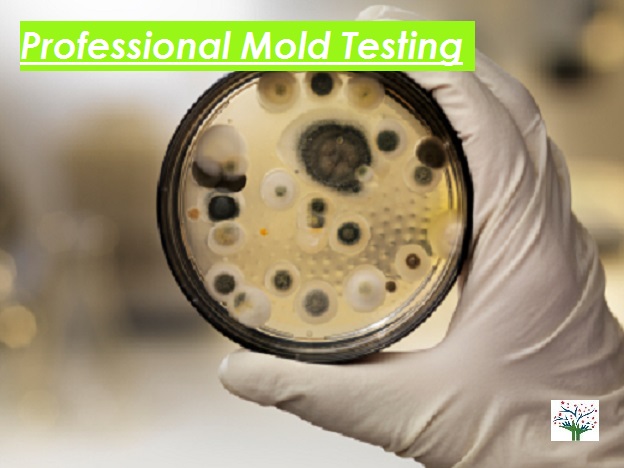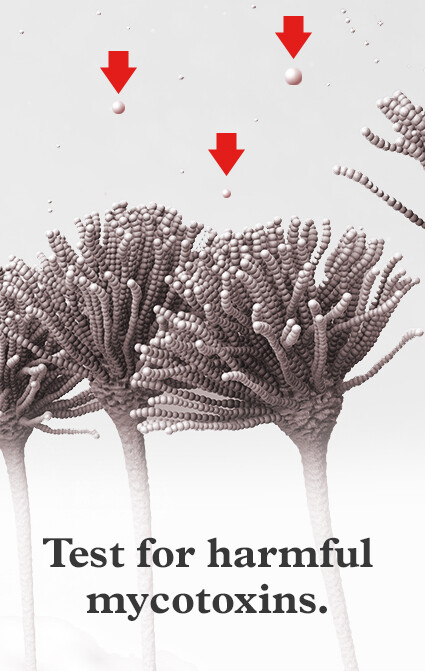How Mycotoxin Testing Aids Avoid Contamination and Guard Food Products

Mycotoxin screening is a vital method in the food sector, acting as a frontline defense against contamination by harmful contaminants produced by mold and mildews. Via the application of innovative methods like High-Performance Fluid Chromatography (HPLC) and Fluid Chromatography-Mass Spectrometry (LC-MS), food producers can accurately measure and identify mycotoxin degrees in agricultural products. This aggressive strategy not only guarantees compliance with rigid safety and security guidelines however likewise alleviates wellness dangers to customers. Normal screening fortifies brand name online reputation and economic health by lowering contamination-related events. So, how specifically do these testing protocols incorporate into the broader food security strategy?
Recognizing Mycotoxins
Recognizing mycotoxins begins with acknowledging that they are harmful second metabolites created by particular molds, which can infect farming items. These metabolites are not important for the development or recreation of the fungis but can have extreme effects for animal and human health and wellness. Mycotoxins are commonly discovered in staple crops such as corn, wheat, barley, and nuts, where they can multiply under specific problems of dampness and temperature.
There are numerous sorts of mycotoxins, each generated by different fungal types. Aflatoxins, produced by Aspergillus varieties, are amongst one of the most notorious, known for their cancer causing residential properties. One more substantial group consists of ochratoxins, created by Aspergillus and Penicillium species, which have nephrotoxic results. Fusarium varieties generate trichothecenes and fumonisins, both of which are connected with various acute and persistent wellness issues.

Threats of Mycotoxin Contamination
The dangers of mycotoxin contamination are complex, posturing considerable dangers to both food safety and public health. Mycotoxins, hazardous compounds created by certain kinds of fungi, can contaminate a large variety of farming products consisting of grains, nuts, flavors, dried out fruits, and coffee.
Economic influences are another significant worry. Polluted plants can result in significant financial losses for farmers and food producers as a result of reduced returns and the demand for costly decontamination steps. Worldwide trade can be substantially hindered as countries implement stringent mycotoxin policies to safeguard their populations, leading to declined deliveries and stretched profession relations.
Environmental variables such as climate change aggravate the danger of mycotoxin contamination. Variations in temperature and humidity can develop beneficial conditions for fungal development, raising the likelihood of contamination events. Hence, understanding and minimizing these threats are essential for making certain the security and integrity of worldwide food materials.
Approaches of Mycotoxin Testing
Accurately identifying mycotoxin contamination in agricultural items is essential for securing public health and wellness and keeping food security standards. Different methods are used to spot and evaluate mycotoxins, each offering details benefits and limitations.
High-Performance Liquid Chromatography (HPLC) is an extensively check this utilized method because of its high level of sensitivity and accuracy. It involves separating mycotoxins from various other compounds in a sample, making it possible for accurate quantification. Liquid Chromatography-Mass Spectrometry (LC-MS) combines liquid chromatography with mass spectrometry to offer detailed molecular info, making it particularly useful for determining several mycotoxins concurrently.

Gas Chromatography-Mass Spectrometry (GC-MS) and Thin-Layer Chromatography (TLC) are likewise utilized, each with special applications. GC-MS is effective for unpredictable mycotoxins, while tender loving care uses a less complex, cost-efficient alternative for initial screening.
Benefits of Routine Testing
Regular This Site testing for mycotoxins in farming products uses various advantages, dramatically adding to public wellness and food safety and security. By identifying contamination early, normal screening aids avoid the distribution of harmful foods, therefore lowering the danger of mycotoxin-related illnesses amongst consumers. This aggressive approach not only safeguards human health however likewise improves the general top quality of food supplies.
Consistent testing likewise sustains regulative compliance. Various nations and regions have established rigorous restrictions for mycotoxin degrees in food and feed. Sticking to these limitations through routine testing makes certain that providers and producers meet legal requirements, therefore preventing charges and profession barriers. Moreover, maintaining conformity fosters customer count on and brand online reputation, which are vital for market success.
Furthermore, routine mycotoxin screening can lead to considerable economic advantages. Early detection of contamination enables prompt treatment, lowering possible losses from prevalent contamination. Applying regular testing methods can likewise reduce recall expenses and associated liabilities, which can be monetarily ruining.
Additionally, regular testing supplies important data that can educate far better agricultural practices and storage space problems. By recognizing patterns of contamination, producers can embrace safety nets, thereby contributing and decreasing future dangers to the sustainability of the food supply chain.
Implementing Checking Procedures
Applying reliable mycotoxin screening procedures is vital for making certain the security and quality of farming items. Establishing a durable testing structure involves several vital actions, beginning with the identification of potential contamination factors within the manufacturing and supply chain. This includes pre-harvest, post-harvest, storage space, and circulation phases. Each this content phase needs to be looked at to determine where mycotoxin contamination is most likely to happen.
Once critical control factors are determined, choosing suitable testing techniques is essential. Typical strategies include enzyme-linked immunosorbent assay (ELISA), high-performance fluid chromatography (HPLC), and mass spectrometry (MS) Each approach has its toughness and weak points; hence, picking the correct one depends on the certain mycotoxin being checked, the called for sensitivity, and readily available sources.

Last but not least, incorporating the screening procedures into a detailed food safety administration system is recommended. This enhances traceability and allows swift rehabilitative actions when contamination is found, thus securing the stability of the food supply chain.
Final Thought
Mycotoxin testing is important in avoiding contamination and guarding food products by enabling very early detection of hazardous toxins created by molds in agricultural items. Advanced approaches such as HPLC and LC-MS guarantee conformity with safety policies and secure customers from health risks. Regular testing boosts brand online reputation, economic stability, and count on food safety and security by minimizing contamination-related losses and maintaining high criteria in food manufacturing. Applying extensive screening procedures is therefore essential for the industry's total well-being.
Mycotoxin testing is an important method in the food industry, offering as a frontline defense against contamination by harmful toxic substances produced by mold and mildews. An incorporated approach including agricultural methods, storage administration, and routine testing can minimize the threats associated with mycotoxin contamination, making sure food safety and security and public wellness.
The dangers of mycotoxin contamination are multifaceted, posing substantial dangers to both food safety and public health.Regular testing for mycotoxins in agricultural products uses many advantages, dramatically contributing to public wellness and food security.Mycotoxin testing is essential in avoiding contamination and guarding food products by enabling early discovery of harmful toxins created by mold and mildews in farming products.
Comments on “Discover the Benefits of Professional Mycotoxin testing Services Today”